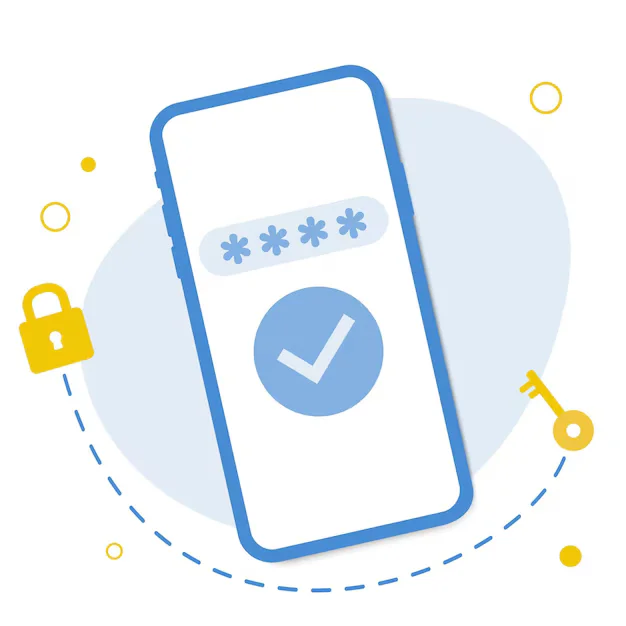Flutter with Firebase: Complete Authentication Flow covers the full process of integrating Firebase Auth into a Flutter app. It includes user sign-up, login, password reset, and sign-out functionalities. Using Firebase’s secure backend services, developers can manage users efficiently. The integration supports email/password, phone, and social logins like Google and Facebook. This approach ensures a smooth and secure user authentication experience in Flutter applications.
Getting Started with Firebase Authentication in Flutter
Learn how to integrate Firebase Authentication in your Flutter app from scratch. This guide covers setting up Firebase Console, connecting your Flutter project, and enabling Email/Password sign-in. You’ll understand the core structure for user login and signup. By the end, you’ll be able to register new users, log in, and manage authentication states. Ideal for beginners who want to build secure apps. Start your Firebase journey here.
Implementing Google Sign-In in Flutter using Firebase
Enable users to log in using their Google accounts with just one tap. This blog walks through setting up OAuth credentials and configuring the Google Sign-In plugin in Flutter. You’ll integrate the authentication flow seamlessly and securely. With a user-friendly login experience, your app becomes more accessible. We also discuss error handling and sign-out functionality. A must-have feature for modern apps.
Phone Number Authentication in Flutter with Firebase
OTP-based phone authentication is one of the most secure and convenient login methods. This article explains how to use Firebase to send verification codes and verify users’ phone numbers. You’ll learn to handle the complete flow, including callbacks and resend timers. We also show how to customize the UI for entering OTPs. Perfect for mobile apps that target regions where email isn’t primary.
Building a Custom Authentication UI in Flutter
Firebase handles backend authentication, but the UI is all yours. In this post, you’ll build a beautiful and functional login/signup interface in Flutter. From form validation to showing error messages and loading indicators, everything is covered. We’ll also include animations and design tips for a professional look. A good UI increases user trust and retention. Complete this guide to give your app a polished feel.
Using Provider for Firebase Auth State Management
State management is critical in handling login and logout flows. Here, you’ll learn how to manage Firebase user state using Provider. We explain how to create an authentication service and notify the UI of changes. Redirecting between login and home screens becomes seamless. This setup also supports real-time auth state listening. A clean solution for scalable apps.
Resetting Passwords with Firebase in Flutter
What if your user forgets their password? In this guide, you’ll implement password reset functionality using Firebase’s email recovery feature. We walk you through form creation, Firebase integration, and user feedback. You’ll also handle input validation and show confirmation dialogs. It’s a simple yet essential feature for professional apps. Users will appreciate the easy recovery process.
Firebase Email Verification in Flutter
Email verification ensures only valid users access your app. This blog demonstrates how to send verification emails after sign-up and check their verification status before allowing login. You’ll also learn how to prompt users to verify and re-send links if needed. Securing your app with verified users boosts authenticity. It’s a crucial step for apps requiring accountability and identity confirmation.
Sign Out Functionality in Flutter with Firebase
A complete auth system isn’t finished without a sign-out feature. This article covers how to log out users from your app and reset their session state. We show how to redirect them to the login screen and clean up local storage. Signing out is important for both privacy and multi-user scenarios. With proper implementation, the user experience remains smooth and secure.
Using Firebase Auth with Riverpod in Flutter
Riverpod offers a powerful and flexible approach to state management. In this tutorial, you’ll integrate Firebase Auth with Riverpod for a cleaner architecture. Learn how to create user providers, listen to auth state, and conditionally build UI. This setup allows better testability and scalability. Ideal for developers looking for an advanced alternative to Provider or Bloc.
Secure User Data Storage After Firebase Login
After users log in, you may need to store some data locally for a better experience. This blog shows how to use secure storage options in Flutter to save email, UID, and tokens. We explain best practices using packages like flutter_secure_storage and shared_preferences. Secure local storage enhances app speed without compromising user data. Ideal for apps with offline functionality.
Multi-Platform Firebase Auth for Web, iOS, and Android
Firebase Auth works across platforms — and Flutter supports them all. This guide helps you implement a single authentication system for web, iOS, and Android. We cover platform-specific setups and how to handle responsive layouts for login. Learn the nuances of Firebase on each device type. Build a consistent user experience wherever your app runs.
Handling Firebase Auth Errors Gracefully in Flutter
Handling errors smartly can make or break the user experience. This post shows how to detect and respond to different FirebaseAuth exceptions. You’ll learn to display meaningful messages, prevent app crashes, and keep users informed. With clear error states and toast messages, users feel supported. It’s all about building trust through thoughtful design.
Role-Based Access Control with Firebase Auth and Firestore
Sometimes, users need different permissions — admin, editor, viewer, etc. In this blog, you’ll learn to assign roles to users and use Firestore to check permissions after login. The tutorial shows how to secure pages and show or hide features based on roles. A powerful technique for apps with different user tiers. Make your app more dynamic and secure with role-based flows.
Firebase Anonymous Authentication in Flutter
Allow users to explore your app without signing up. Firebase’s anonymous authentication lets you offer guest access, which can later be upgraded to full accounts. This guide shows the login flow and how to track anonymous users. It’s ideal for trial versions, product demos, or minimal onboarding. Convert casual visitors into permanent users smoothly.
Complete Firebase Authentication Flow with Clean Architecture
Combine all aspects of Firebase authentication into a clean, scalable architecture. This advanced blog walks you through separating logic into layers: UI, domain, and data. Use services, repositories, and state managers to build maintainable code. Perfect for large-scale apps where clarity and structure matter. The end result is a future-proof authentication flow.







